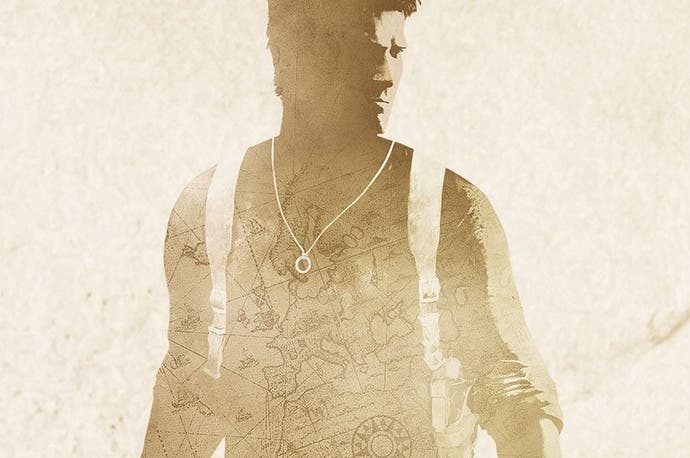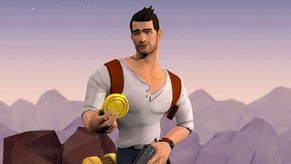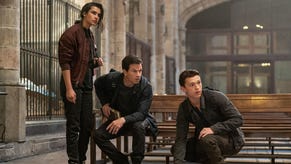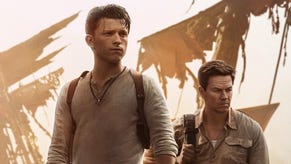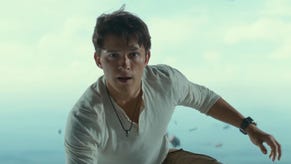Uncharted: Remastered, revisited, reassessed
Playing the Nathan Drake Collection.
Uncharted: The Nathan Drake Collection, released today for PlayStation 4, has a few purposes. It makes Naughty Dog's trio of populist action spectaculars available to play on current consoles. It introduces them to what Sony estimates are the 50 per cent of PS4 owners who didn't have a PS3. And it presents these already exceedingly handsome games in a pristine, buttery smooth remaster by Bluepoint Games which, for its sheer polish and attention to detail, must go down as one of the finest game reissues ever.
What interested me most about it, though, was the chance to play through the three games back to back, and reassess what was surely one of the most - perhaps the single most - influential game series of the last console generation. Between the release of Uncharted: Drake's Fortune in 2007 and Uncharted 3: Drake's Deception in 2011, Naughty Dog - previously purveyors of cartoon mascot romps like Crash Bandicoot and Jak & Daxter - rewrote the rules of cinematic action gaming to such an extent that competitors were left scrambling for the reboot button. By the time they had their wares ready, at E3 2012, everything was Uncharted.
It's not hard to see why. The sheer confidence and brio of the games is still dazzling. Their ability to deliver a spectacular action set-piece - always framed to its best advantage by an unerring camera - is unrivalled. They also have personality and humanity, embodied in their wisecracking everyman hero, the perfectly imperfect Nathan Drake. But their limitations are pretty clear, too. Naughty Dog's devotion to a very cinematic ideal of a playable action movie is so total that the games can be guilty of railroading the player - and its refinement of gameplay consists mostly of smoothing off rough edges until few distinguishing marks remain. In Uncharted, what matters is the image, not what you do to make it. As Simon Parkin wrote in his review of Uncharted 3: Drake's Deception: "Your freedom of choice risks ruining the shot."
So Uncharted's influence on the last few years of blockbuster games - which is only now beginning to wane - has been for better and worse. But what's surprising now is how far off its own mark it was when it started.
"Small beginnings"
If Naughty Dog nailed anything that first time out in Uncharted: Drake's Fortune, it was the tone, the context, the premise. Globe-trotting, treasure-hunting high adventure. Grown-up yet light-hearted; roguish yet sincere; modern yet nostalgic. This was a world of treasure maps and jungles and ritual artefacts and sweat-stained khakis, of swoons and whipcrack quips. It was, quite overtly, heavily influenced by the 1980s action movies Indiana Jones and Romancing the Stone. But in recognising those films you also have to recognise the strain of pop culture that influenced them in turn, running through 1940s film serials, Tintin and Boys' Own back to writers like John Buchan and Jules Verne.
Naughty Dog played it straight and didn't make much of an effort to twist this well-worn formula. But that was a clever move in its own right. At a time when both action cinema and blockbuster games were getting ever more grim and world-weary in their themes, Uncharted's relative innocence and its total lack of cynicism was a breath of fresh air. Here was a game which sent you off in pursuit of the mythical El Dorado, following a trail of clues left by Drake's supposed ancestor, the great Elizabethan explorer Sir Francis Drake; which invited you to explore a rusting Nazi U-boat suspended in a jungle, to race around in jeeps and on jetskis, to romance a spunky journalist and uncover a dastardly plot.
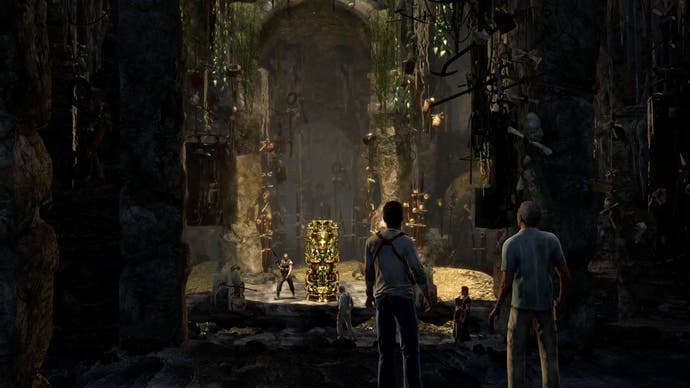
Video games have been in thrall to 80s action cinema since day one, of course, but they had always been more likely to emulate the implacable machismo of Schwarzenegger and Stallone than more humorous, vulnerable and volatile heroes like Harrison Ford and Bruce Willis - perhaps because that required a lightness of touch in performance that was beyond them. Naughty Dog, working under director and lead writer Amy Hennig, took up this challenge and aced it.
Just by looking at his character design, you'd think Drake was an identikit game hunk - all bland and rugged - but he's brought to life by the inspired casting of veteran voice actor Nolan North. North eschews gruff for gabby, injecting even the most basic lines (the script for Drake's Fortune, compared to the later games', is pretty functional) with warmth and a disarmingly natural, off-the-cuff delivery. It's easy to buy into the camaraderie he shares with his partner in crime, Sully - and into the romantic chemistry between him and the journalist Elena Fisher, which is handled with a rare delicacy.
Naughty Dog's gifted animators complete the performance - and not just in cut-scenes. They create a video game hero who, under your control, will saunter or stumble as well as sprint; who is capable of supernatural leaps, but will land from them clumsily, limbs agogo. In a recurring motif in the series, handholds crumble, platforms fall and footing gives way, sending Drake crashing clumsily from one precarious spot of bother to the next. It reinforces the danger, but it crucially also defines Drake by his pluck more than his ability. He's a survivor, not a superman. That, just as much as North's easygoing tone, is what makes him likeable.
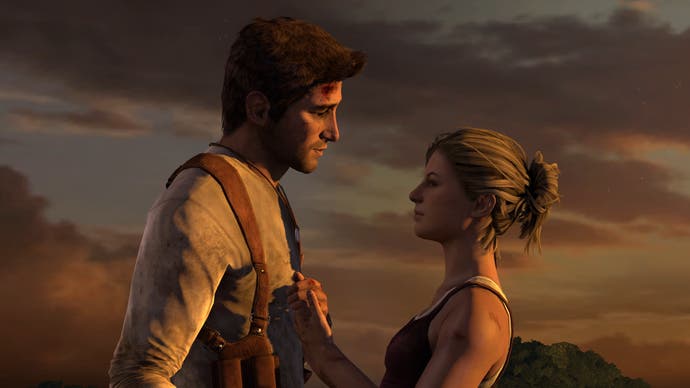
So the pitch is sound and the performance spot on, but Drake's Fortune misses its most important beat: pacing. Eight years on, and now sitting in the long shadow of its two extravagant successors, this is a frequently boring, painfully repetitive game. The combat in the new remaster has been updated to bring it in line with the later games, but it's still the worst iteration of a cover-shooting system that has never been distinguished. And the game is not just carpeted but wallpapered with it: endless, tedious hours of halting shooting galleries, populated with shy dimwits, soundtracked by thin pops and rattles, and interrupted not nearly often enough by puzzles, clambers or story developments.
If you're going to present your players with a script to follow, as the Uncharted games do, you had better make sure the script has rhythm, shape, variety. For all its confident strut, Drake's Fortune just doesn't have the beats. With a better structure, its almost Aristotelian unity of action, time and place - the game takes place on two nearby islands and most of it happens over the course of a single day and night, ending at dawn - might have acquired a welcome intensity. As it is, it just feels thinly spread, and the fantastical denouement is an undercooked cliché.
Naughty Dog's Arne Meyer recently told me that the internal view of Drake's Fortune is that it's "not our best work". That's honest, but it's not surprising - because when you play Uncharted 2: Among Thieves, you can see the studio knew exactly where it had gone wrong.
"Sorry, love, this isn't a movie"
I'm not sure a game has ever announced itself more purposefully than Uncharted 2: Among Thieves does in its opening minutes. The famous intro, in which Drake comes to in a wrecked train car dangling vertically off a mountainside and must climb his way to safety, is not just an effective tutorial and a striking set-piece, it defines the whole game - which garnered instant acclaim as an action classic.
It's actually a flash-forward to a point halfway through the game, a deliberately jarring technique that speaks of a new level of ambition in how the game is composed. Realising that Uncharted's exceptionally smooth flow of action, so reassuring and consistent, enables them to take much greater risks with the context for that action, the writers and designers embrace filmic techniques that might unbalance other games. They have learned the power of the edit. In stark contrast to Drake's Fortune, this is a continent-spanning yarn that takes you from a Istanbul to Borneo to Nepal and Tibet in pursuit of the legendary land of Shambhala, skipping back and then forwards in time, and using strongly contrasting locations: a hushed museum, a war-torn city, a peaceful village, a lonely crevasse.
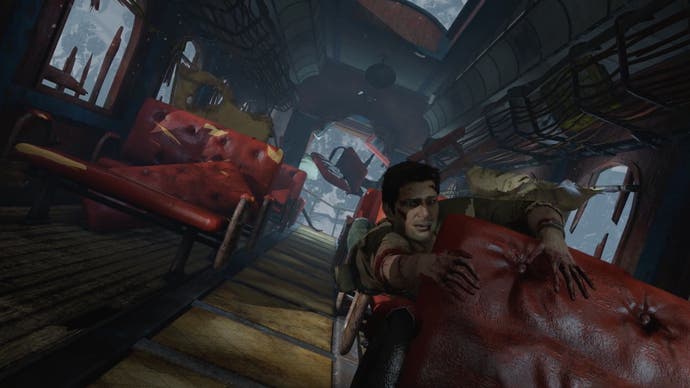
Another new element from that intro is a willingness to test Drake's insouciance and really put him through the wringer. He's no longer just falling and flailing, he's being physically battered and frozen to the point of death. It's the Die Hard theory of action: an everyman suffering through pain you can taste is more heroic than a superman overcoming impossible odds. It's not just in the action that the character is given more shading and depth. Hennig slyly undercuts his breezy simplicity using things unsaid. The double-crosses surrounding the Istanbul heist suggest he's not an entirely straight shooter; he has a new girlfriend, Chloe, and when Elena appears it's clear something went wrong, but what? You fill in the blanks yourself: he's unreliable, he takes nothing seriously, he can't sit still.
The most lasting impression of the intro, though, is its sheer visual audacity. Uncharted's platforming action is extremely simple and rarely challenging: spot the path, push towards it, press X and Drake's magnetic grip will find its hold. It's barely gameplay, although it does offer a soothing satisfaction and is arguably easier to enjoy than the combat. But this basic, sturdy frame is dressed with a great eye for spectacle, invention and visual wit. In an upended train carriage, seats become ledges; Drake crawls across the faces of giant statues and leaps between speeding vehicles; a building topples and the world's moorings are cut loose for a second. All of it captured by that superb camera, cutting and gliding from steeply angled tracking shots to tense close-ups, somehow without obscuring your progress for a second.
Yes, Among Thieves is an incredibly assured game. It is little more than a ride, but what a ride; it's hardly surprising that it wowed critics so six years ago. If pacing is Drake's Fortune's fatal flaw, it is Among Thieves' greatest strength - and a good job too, because in this genre, pacing is everything. Uncharted 2 swings you from scene to perfectly modulated scene of exploration, gentle puzzle solving, dialogue and combat, each element rarely outstaying its welcome, and then punches through a series of memorably outrageous set-pieces.
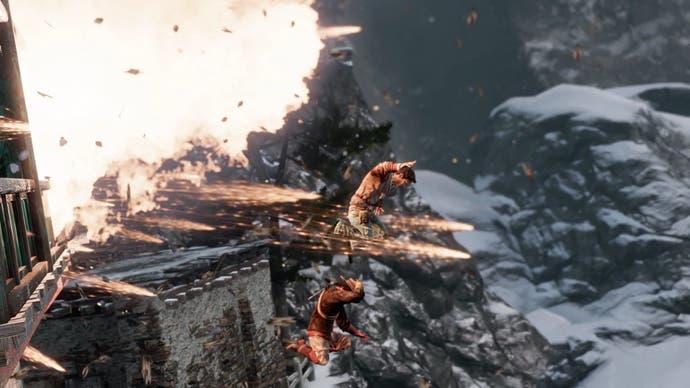
It can't keep it up, though, and in the game's final third, its stride falters. Or perhaps it would be more accurate to say that its momentum carries it too far. The game's high point is a hectic set-piece on a moving train (which was apparently the first chapter to be prototyped and the last to be completed, taking the entire two-year development cycle to perfect), culminating in the revisited train crash from the opening. Then there's a stark and lovely tonal switch as Drake awakes in a mountain village and ambles through it, kicking a football with the local kids. And then - then the game makes a series of desperate lunges to top itself that feel tawdry and overcooked.
The idyllic village is revisited and razed in a brutal, attritional tank battle. There has always been an awkward tension between Uncharted's light tone and its relatively mild, but copious violence: Drake is, as the wags have it, the world's most charming mass-murderer. But if this scene is an attempt to address that, it feels ham-fisted and cheaply exploitative, not to mention contradictory. Besides, those jokes are compliments of a sort, to be brushed off rather than guiltily manhandled. Drake's body count is no higher than hundreds of other video game heroes', and it only strikes a bum note because he seems that much more like a pleasant human being, less like a lonely psychopath.
And if Drake's Fortune is too formulaic in its climactic reach for the fantastical, then Among Thieves is too wild. A game that has established itself, right from its opening moments, as simultaneously preposterous and grounded - larger than life, but still lifelike - veers, at journey's end, into tacky 1990s video game cheese. Suddenly you find yourself battling blue-skinned supermen and shooting exploding goo. The human antagonist, a bloodthirsty Baltic mercenary, hardly helps anchor this climax: he's a forgettably one-dimensional, snarling cliché, a refugee from a much cheaper and less polished production.
Among Thieves is a thing of pure momentum; breathless, often breathtaking. But its makers didn't think enough about where that momentum was carrying it, or why. Next time, they might have thought about that a little too much.
"A heap of broken images"
After the acclaim that greeted Among Thieves, Uncharted 3: Drake's Deception suffered a mild critical backlash, from fans as well as in reviews. It was largely a victim of its predecessor's wild success. Uncharted 2 had been such a triumphant proof of concept that we were now free to turn our attention to the validity of the concept itself. It was beautiful and exciting, sure, but was it really a video game? Didn't you just press forward and fire? Where was the player in all this?
And now that we could take Uncharted's mastery of its form of cinematic gaming for granted, we looked more closely at the story it was a vehicle for. It seems odd now that this game wasn't as well received as Among Thieves, which while nicely strung together, had a basic plot with little to say. With Drake's Deception, Naughty Dog was certainly trying, perhaps too hard. This is an over-the-top action game about fortune hunters looking for a secret city - Ubar, "the Atlantis of the sands" - that quotes TS Eliot's The Wasteland and, instead of Indiana Jones' hijinks, strives for the epic, elegiac tone of Lawrence of Arabia. Had Naughty Dog bought into its own hype and allowed itself to get over-ambitious? Pretentious, even?

Yes and no. The literary pretensions are certainly out of place, and it's true that Drake's Deception strikes a darker, more self-serious note than its predecessors - a dangerous game when you consider that Uncharted's carefree, rollicking soul is central to its appeal. But the tone goes hand in hand with a far more mature and sophisticated storytelling approach. Not only did this pave the way for Naughty Dog's next game, the excellent The Last of Us, but it created a much more satisfying and coherent narrative arc for this one.
It's still all-out action and adventure, of course - almost to a fault. Even more restless and scattershot than Among Thieves, Drake's Deception takes in a London pub brawl, a childhood flashback, a burning chateau, chases on foot and sea and horseback, sinking ships, crashing planes and druggy hallucinations. The staging is often brilliant: an urgent foot pursuit through the streets of Yemen has a wonderfully breathless tempo, a fight on the open tailgate of a cargo plane boasts shots that any Hollywood director would envy, and Drake's escape from a sinking cruise liner as it lists over on its side is, for my money, the most thrilling and imaginative set-piece in the entire series.
And yet none of these stick in the memory in quite the way Among Thieves' high points do, for a simple reason: there are actually too many of them. Beyond that, the designers are sometimes so concerned with constructing the perfect action sequence that they leave the player behind. At those moments, Uncharted's famously seamless flow disintegrates and the game snags on a juddering series of pernickety fail states. Cut! That was out of frame, a fraction of a second off. Do it again.
As for Drake himself, the game is much more explicit about his darker side. Furnishing him with a boo-hoo back story and questioning his claims about himself, some fans feel Drake's Deception tipped him too far into moodiness. But it strikes me that, three games in, this was a necessary move, if Uncharted's high-wire balancing act between humanity and fantasy was to be maintained. Sully, Chloe and Elena all raise a question that players would otherwise be asking themselves: why does he keep pursuing the mirage when it never leads to a pot of gold, and always to a terrible threat? Is he really stopping the bad guys or leading the charge into disaster?

Rather than the superficial violence, this is the pathological contradiction at the character's heart that had to be resolved before it made a mockery of his, and our, motivation. Drake's Deception acknowledges that, makes sense of it and fixes it. The game even goes so far as to give him, and us, a stark and contemplative moment in the wilderness. During a memorable desert fugue (underscored rather portentously by that TS Eliot quote), Drake wanders hopeless and directionless, pushing forward for no reason, going in circles. "Metaphor ain't going to pay the bills, kid," Sully said in the previous game. Care to rethink that?
It's delicate stuff for such a bombastic game to try, but Uncharted 3 pulls it off because, unlike its predecessor, it knows when to stop and when to pull things together. The villain, a Helen Mirren-alike called Kate Marlowe, is less of a talking MacGuffin and more of a coherent part of this world; her story turns out to be inherent to the lore. And, though Naughty Dog knows a final-act leap into supernatural fantasy is expected of it, it effects this in a cleverly ambiguous manner that, for the first time, keeps Uncharted just the right side of grounded.
That balancing act isn't going to get any easier. Uncharted's filmic ambitions are constantly pulling it in opposite directions: towards ever more extravagant spectacle on the one hand, and some semblance of character-driven drama on the other. And both of these seem to pull the series away from its gameplay - which is approachable, slender, simple to the point of being dull, as if trying not to get in the way. It makes for a contrast with The Last of Us, which in its gritty survival scenario found something it could hitch both substantive gameplay and substantial drama to.
Among the reasons to be hopeful that next year's Uncharted 4: A Thief's End will keep a sure footing is the fact that The Last of Us' creative leads Bruce Straley and Neil Druckmann have taken the reins, after Hennig's departure from Naughty Dog. Another, though, is the impression I'm left with after playing all three games in The Nathan Drake Collection back-to-back: progress. For all its confident swagger, its unchallenging mass appeal and its overstated influence - for all its apparent sunny complacence - this is a series that's always striving for something more. Always pushing forwards.
